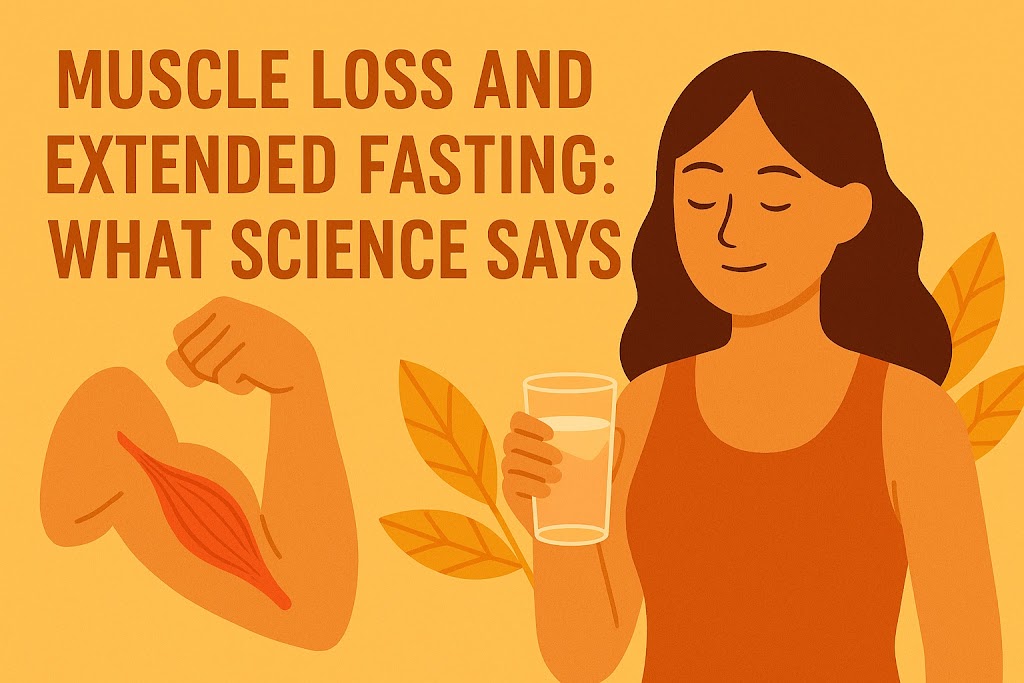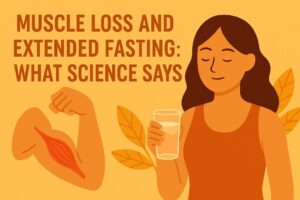Fasting Beyond 72 Hours: Muscle Loss, Dry Fasts, and What Research Actually Says
Prolonged fasting—especially beyond 72 hours—raises questions about muscle preservation and the safety of practices like dry fasting. This article delves into the scientific research to clarify these concerns and help you fast smarter and more safely.
Muscle Preservation During Extended Fasting
Contrary to common belief, the body has mechanisms to preserve muscle during fasting. Initially, the body utilizes glycogen stores for energy. As fasting continues, it shifts to fat-derived ketones, reducing the need for glucose and sparing muscle protein.
Studies indicate that during a 72-hour fast, the body adapts to preserve muscle mass. For instance, a study published in the Journal of Clinical Endocrinology & Metabolism found no significant muscle loss in lean individuals after a 72-hour fast. [Source]
Hormonal Adaptations That Protect Muscle
Fasting induces hormonal changes that favor muscle preservation:
- Increased Human Growth Hormone (HGH): HGH levels can rise significantly during fasting, promoting fat utilization and muscle maintenance.
- Elevated Ketone Bodies: Ketones serve as an alternative energy source, reducing the need for glucose derived from muscle protein.
These adaptations are part of the body’s natural response to conserve lean tissue during periods of food scarcity.
Risks of Prolonged Fasting
While short-term fasting is generally safe, extended fasting can pose risks:
- Electrolyte Imbalance: Prolonged fasting without electrolyte supplementation can lead to imbalances, affecting muscle function and heart rhythm.
- Refeeding Syndrome: After extended fasting, reintroducing food improperly can cause dangerous shifts in fluids and electrolytes.
To stay safe, use zero-sugar electrolyte powders to maintain hydration and mineral balance while fasting.
Understanding Dry Fasting
Dry fasting involves abstaining from both food and water. While some claim benefits, scientific evidence is limited, and risks are significant:
- Dehydration: Lack of water intake can lead to severe dehydration, affecting kidney function and overall health.
- Muscle Catabolism: Without hydration, the body may break down muscle tissue more rapidly to meet its energy needs.
Medical experts generally advise against dry fasting due to these potential dangers. [Source]
How to Preserve Muscle During Extended Fasts
To minimize muscle loss during fasting:
- Stay Hydrated: Drink plenty of water and add trace mineral drops for optimal electrolyte balance.
- Supplement Smartly: For muscle protection, consider essential amino acids (EAAs) that support protein synthesis during long fasts without significantly spiking insulin.
- Do Light Resistance Training: Use your body weight or a resistance band set to signal the body to preserve muscle mass.
- Break Your Fast Carefully: Use clean protein like bone broth powder to support refeeding and lean mass recovery.
Final Thoughts
Extended fasting can be powerful for fat loss and metabolic healing—but it must be done with strategic care. Your body has remarkable systems for preserving muscle during periods of food scarcity, especially when you support it with proper hydration, minerals, and recovery.
Dry fasting, on the other hand, carries far greater risks and should not be attempted casually. If you’re fasting beyond 72 hours, use the right tools—like electrolytes, EAAs, and light movement—to support your health and preserve lean mass.
Share this post with someone who’s curious about long fasts and muscle retention.
And tag @TheResetRitual if you’re sharing your fasting journey or insights.
Disclaimer: This article is for informational purposes only and does not constitute medical advice. Always consult with a healthcare provider before making changes to your diet, fasting routine, or supplements. This post may contain affiliate links. As an Amazon Associate, I earn from qualifying purchases.


